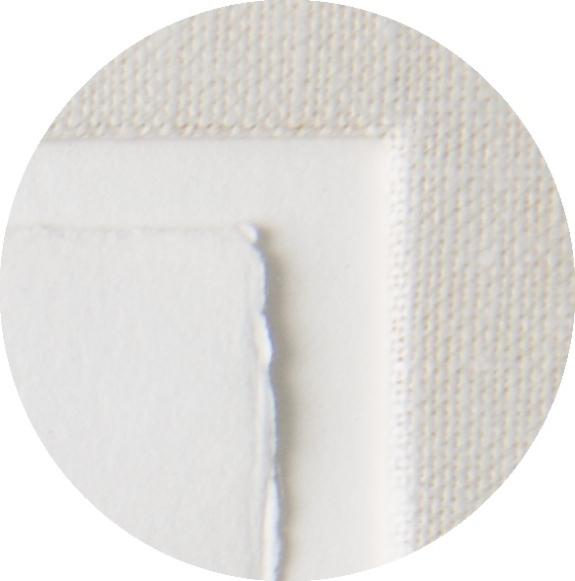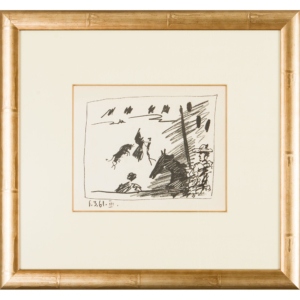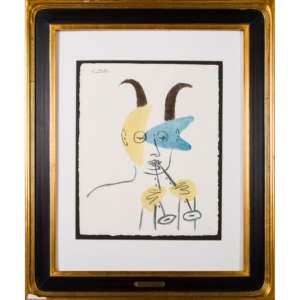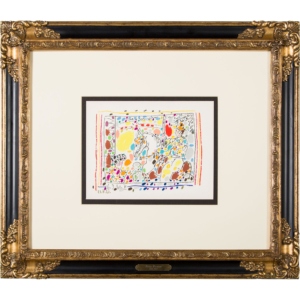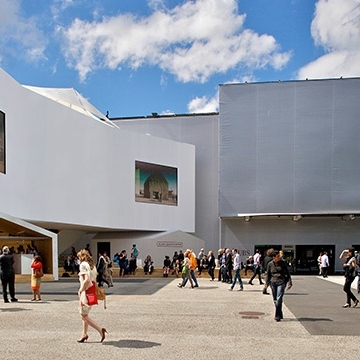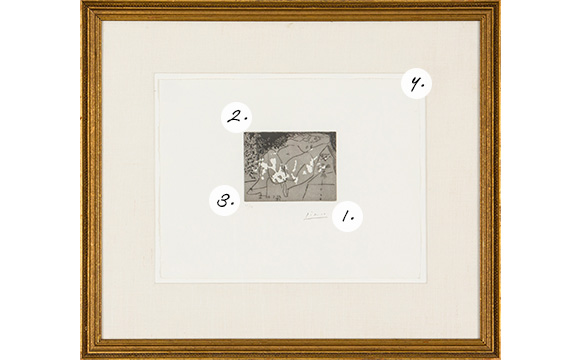
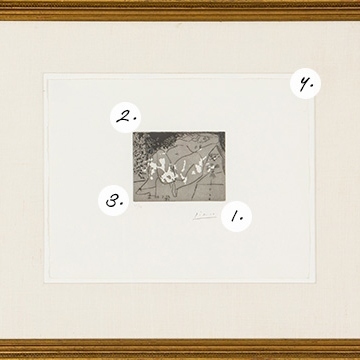
How to Authenticate Picasso Artwork Like an Expert Curator
“There are so many art forgeries out there; that’s why you need to buy from a trusted source like The RealReal,” says Senior Fine Art Specialist, Brittany Gersh. Gersh and her team authenticate fine art daily for works by artists from Miró to Calder. They’re so confident in their verification process, in fact, that they even back it up with a five-year warranty. “It’s our way of saying that we’ve done our due diligence, and based on our research, we believe this piece is real. And we stand by that.”
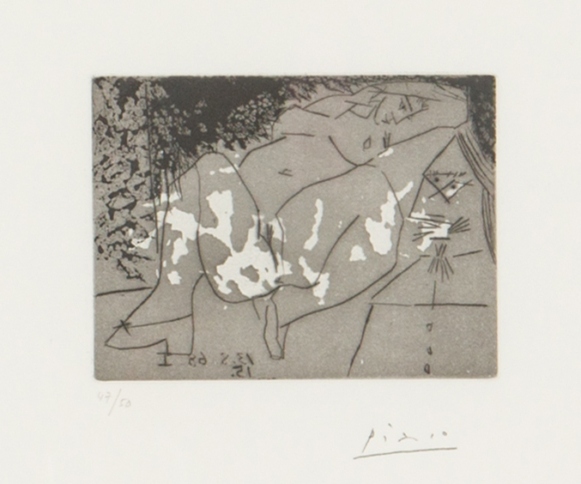 We asked Gersh to walk us through how she verifies one of the world’s most high-profile artists, Pablo Picasso, using his piece ‘Jeune Femme et ‘Mousquetaire.’ “This is from Series 347 — one of the largest series that Picasso ever completed, and one of the last before he died,” she says. “In many ways, the series encompassed his ‘greatest hits’ — themes like circuses, bullfights and courtesans. Bawdy and prolific, it’s a very important one in his career.”
We asked Gersh to walk us through how she verifies one of the world’s most high-profile artists, Pablo Picasso, using his piece ‘Jeune Femme et ‘Mousquetaire.’ “This is from Series 347 — one of the largest series that Picasso ever completed, and one of the last before he died,” she says. “In many ways, the series encompassed his ‘greatest hits’ — themes like circuses, bullfights and courtesans. Bawdy and prolific, it’s a very important one in his career.”
Keep reading to hone your own eye for art, as Gersh shares the key components she checks before giving a Picasso piece like this her stamp of approval.
1. The Signature
 “This is the first thing to look for,” says Gersh. “You can tell pretty quickly if it’s incorrect.” While some artists sign in pen, Gersh says pencil is important because it’s more difficult to transfer. Also, look for consistency — compare the signature with other works by the artist. “Picasso’s name is usually underlined, and his signature is at a slight angle. Note the spacing of the letters as well; they’re consistently the same proportion apart, even in his more scripted signatures.”
“This is the first thing to look for,” says Gersh. “You can tell pretty quickly if it’s incorrect.” While some artists sign in pen, Gersh says pencil is important because it’s more difficult to transfer. Also, look for consistency — compare the signature with other works by the artist. “Picasso’s name is usually underlined, and his signature is at a slight angle. Note the spacing of the letters as well; they’re consistently the same proportion apart, even in his more scripted signatures.”
2. The Print
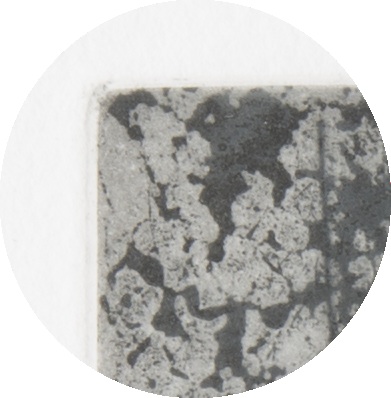 “I’ll usually look through a loupe to see how the piece is printed — different types of printing have different textures,” says Gersh. “This piece is an aquatint and drypoint, so it’s a combination of two types of printing. Aquatints usually look a little softer under a lens.” You’ll also note this piece has an indentation around the edge of the print, because it was stamped with a plate. “If it’s listed as an etching, for example, but doesn’t have an indentation, that’s an issue.”
“I’ll usually look through a loupe to see how the piece is printed — different types of printing have different textures,” says Gersh. “This piece is an aquatint and drypoint, so it’s a combination of two types of printing. Aquatints usually look a little softer under a lens.” You’ll also note this piece has an indentation around the edge of the print, because it was stamped with a plate. “If it’s listed as an etching, for example, but doesn’t have an indentation, that’s an issue.”
3. The Edition
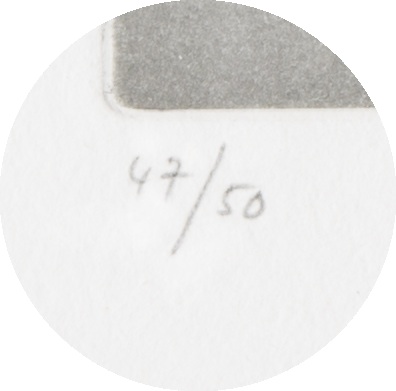 “Make sure the number is consistent with the actual edition,” says Gersh. “We usually reference a catalogue raisonné, which is a catalog of the artist’s work. We’ll check to see how large the edition was, the description of the piece — you want to be certain everything adds up.” As far as the look of the numbers themselves, she says the primary gallery or publisher will sometimes pencil in the edition, so it won’t necessarily correspond to the artist’s handwriting.
“Make sure the number is consistent with the actual edition,” says Gersh. “We usually reference a catalogue raisonné, which is a catalog of the artist’s work. We’ll check to see how large the edition was, the description of the piece — you want to be certain everything adds up.” As far as the look of the numbers themselves, she says the primary gallery or publisher will sometimes pencil in the edition, so it won’t necessarily correspond to the artist’s handwriting.
4. The Paper’s Edges
“It’s important to note the deckled edges, because it means the piece wasn’t cropped or printed on other paper,” says Gersh. “Editions are often printed on specific types of paper. Deckled edges are one way to note that the print has its full, original margins.”
Once you’ve checked these main points, don’t forget to also assess the condition before you invest. “Condition can really affect a piece’s value,” says Gersh. “If it’s framed, it should be framed using archival materials, like an archival mat. If you’re unsure, ask a professional framer to take a look.” If the piece does not use an archival mat, the mat can yellow and degrade, or you might see ‘foxing’ — a term used to describe small brown age spots that appear on paper as a result of not using archival materials. “Something like an archival mat is more important than the condition of the frame — a frame is just aesthetic.”
Ready to select your own Picasso? Browse our collection of artwork by the master, along with more covetable fine art pieces.
All items are pre-owned and consigned to The RealReal. Trademarks are owned by their respective brand owners. No brand owner endorses or sponsors this ad or has any association and/or affiliation with The RealReal.
Please note: Brand standards, logos and other identifying features may have changed since the time of publication.


